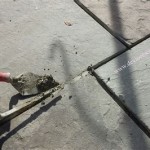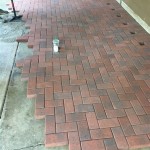How To Build A Raised Flagstone Patio
A flagstone patio adds a touch of rustic elegance to any outdoor space. Unlike a traditional concrete patio, a flagstone patio is crafted from natural stone, creating a unique and inviting atmosphere. This article will guide you through the process of building a raised flagstone patio, providing step-by-step instructions and essential tips for success.
1. Planning and Preparation
Before you begin, careful planning is crucial for a successful flagstone patio project. This involves defining the desired size and shape of your patio, considering the surrounding landscape, and selecting the right materials.
First, determine the size and shape of your patio. Consider the available space, the intended use of the patio, and the overall aesthetic of your outdoor area. Measure the desired dimensions carefully and mark them on the ground. You may even consider sketching a basic layout to visualize the final result.
Next, consider the surrounding landscape. Ensure the patio is positioned at a suitable elevation to avoid flooding or drainage issues. If necessary, slope the ground slightly away from the house to facilitate water runoff. Also, assess the existing terrain and plan for any necessary grading or leveling.
Lastly, select the right materials. Flagstones are available in various types, sizes, and colors. Consider the desired aesthetic, the weight of the stones, and their durability. Consult with a local stone supplier to discuss options and get advice on selecting suitable materials.
2. Constructing the Base
The foundation of a raised flagstone patio is crucial for long-term stability and drainage. This involves digging the base, laying a compacted gravel bed, and adding a layer of sand for leveling.
Start by digging the base for the patio. The depth of the base will depend on the desired height of the patio. A typical raised flagstone patio is about 6 inches high, requiring a base depth of approximately 12 inches. Use a shovel or a power auger to remove the soil within the marked area.
Once the base is dug, lay a 4-inch layer of compacted gravel. Gravel provides drainage and stability for the patio. Spread the gravel evenly across the base and compact it thoroughly using a tamper or a plate compactor. This will ensure the base is firm and level.
Finally, add a 2-inch layer of sand on top of the compacted gravel. Sand acts as a bedding material for the flagstones. Spread the sand evenly and level it using a rake or a leveling board. This will create a smooth and uniform surface for laying the flagstones.
3. Laying the Flagstones
With the base prepared, you can start laying the flagstones. This involves carefully selecting and arranging the stones, ensuring proper spacing and incorporating a drainage system.
Begin by selecting the flagstones for the perimeter of the patio. Choose stones that are relatively flat and rectangular, as these will form the edges and create a clean and defined border. Lay these stones along the marked perimeter, ensuring they are level and flush with the sand.
Next, start laying the flagstones for the interior of the patio. Select stones of varying sizes and shapes to create a natural and interesting pattern. Arrange the stones close together, leaving a small gap (about 1/4 inch) between them for drainage.
As you lay the stones, use a rubber mallet to gently tap them into place. This will ensure the stones are firmly embedded in the sand and create a level surface. Adjust the spacing between the stones as needed to create a visually appealing pattern.
4. Sealing and Grouting
Once the flagstones are laid, sealing and grouting are important steps to protect the patio and enhance its appearance. Sealing prevents stains and water absorption, while grouting fills the gaps between the stones, enhancing their durability.
Before sealing, clean the flagstones thoroughly to remove any dirt, debris, or mortar residue. Use a stiff-bristled brush and a mild detergent to wash the stones and allow them to dry completely.
Apply a penetrating sealer to the flagstones. This type of sealer penetrates the stone's pores, creating a protective barrier against stains and water damage. Follow the manufacturer's instructions for application and allow the sealer to cure completely before proceeding.
Finally, grout the gaps between the stones. Use a sand-based grout that is specifically designed for flagstone patios. This type of grout allows for slight movement in the stones without cracking. Apply the grout evenly using a grout bag or a rubber trowel. Wipe away any excess grout with a damp cloth and allow it to cure completely.

Avoiding Disaster Through Proper Design Of A Raised Paver Patio

How To Build A Raised Patio With Retaining Wall Blocks

How To Build A Raised Patio With Retaining Wall Blocks

How To Build A Raised Patio

How To Build A Raised Paver Patio Western Interlock

Diy Raised Patio Part 1 3 Introduction Preparation Footings

Crafted Work Raised Patio With 100 Retaining Wall

Questions On Sloping A Raised Patio Lawn Care Forum

Flagstone Pavers 5 Ways They Make New Patios Superior

How To Build A Raised Patio With Retaining Wall Blocks
Related Posts








